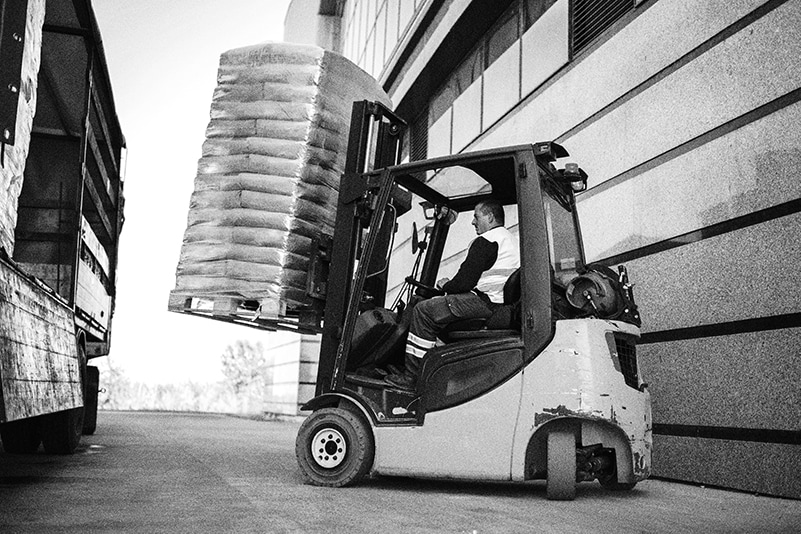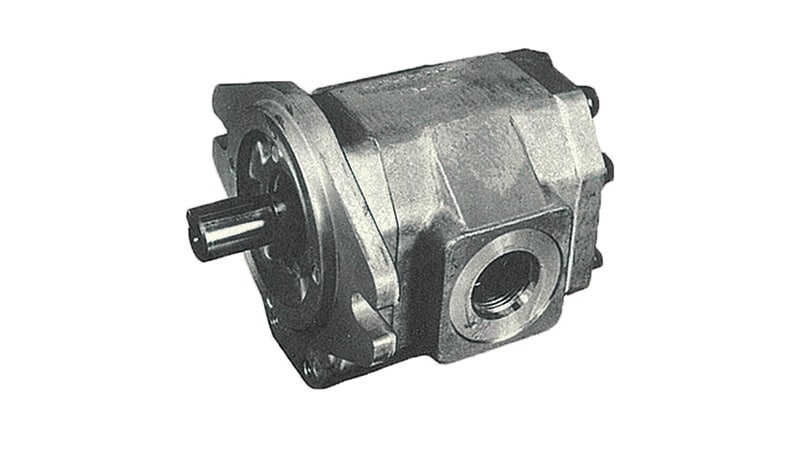Hydraulic Equipment that Supported Japan’s Economic Growth
Series: Shimadzu's Heritage
The rapid economic development that took place in Japan in the late 1950s was partly supported by hydraulic equipment. The ability of hydraulic components to transform a small force into a massive one played a key role in all types of industrial machinery and automobiles, and hydraulic equipment continues to support Japan’s economy today.
Japan’s Rapid Economic Growth and Increasing Demand for Hydraulic Equipment
In the approximately 20-year period that started in 1955, Japan underwent a period of sustained economic expansion, now referred to as Japan’s years of high economic growth. In real terms, Japan’s economy grew annually by 10 % during this period. Modern methods of mass production were applied to textile, machinery, chemical, metal-working, and other industries, resulting in substantial growth within these industries. The lives of Japan’s citizens also changed significantly over this period, including a boom in demand for durable consumer goods. In particular, three home appliances, the refrigerator, washing machine, and television, became aspirational items for Japanese people. Transport infrastructure, such as roads, the Shinkansen bullet train, and airports, was also built during this period. Rows of concrete buildings were erected in cities, and Japan entered an age of mass production and mass consumption.
These rapid changes cannot be described without mentioning the role played by machinery. Machinery for building plants and transport infrastructure, and trucks, forklifts, and other machinery for handling and transporting cargo that increased logistical efficiencies, were all running at full tilt. And hydraulic components could be found in almost every one of these machines.
Hydraulics is a tool that utilizes Pascal’s principle. By transforming a small force into a larger force, hydraulic equipment generates power and efficiencies beyond the scope of human ability. Hydraulic equipment is used in most construction machinery, for power steering, for example, and in hydraulic excavators and forklifts and for lifting/lowering truck beds. Increased demand for this machinery paved the way for Japan’s consumer society.

Voracious consumption was the driving force behind Japan’s years of high economic growth. Japan’s mass production and mass transport facilities were built thanks in large part to hydraulic components able to transform small forces into larger forces. (Photo by Getty Images)
Successive Technological Innovations that Met Market Demands via Increased Speed, Pressure, and Efficiency
Hydraulic equipment truly emerged in the historical narrative of global industry at the beginning of the 20th century. Industrial development led to an increased demand for efficiency, and the transition from manual industry to mechanical industry created more opportunities for hydraulic equipment to prove its worth.
In 1926, Shimadzu began the manufacture of a liquid delivery gear pump for rayon spinning, a high-pressure lubricator, and other gear pumps. In 1938, Shimadzu produced a high-pressure hydraulic actuation pump for aircraft. And in 1961, the company began producing its own hydraulic equipment for use in a wide range of applications. After achieving success in forklifts and marine equipment, Shimadzu entered into a technology partnership with the US company BorgWarner in 1963. Shimadzu commenced the development of hydraulic gear pumps at this time, and gear pumps have remained a key product in Shimadzu’s lineup of hydraulic equipment.
These products were mainly utilized in truck cranes but were susceptible to poor performance in the cold. Hydraulic gear pumps achieve optimum performance by maintaining an optimum distance between the pump body and gear teeth. However, up to this point, gear pumps used different materials for the pump body (aluminum) and gears (iron) that contracted by different amounts in cold conditions. This difference caused the gear teeth to grind away the pump body, which prohibited an optimum distance between the pump body and gear wheels, leading to reduced performance. Shimadzu resolved this problem by developing a gear pump with a cast iron pump body that lay the groundwork for future technical development.
The history of progress in hydraulic gear pumps is a continuous series of technological innovations intended to meet market demands by increasing equipment speed, pressure, and efficiency. Each of these improvements also often magnified the issue of unwanted noise. Increasing operating speed and pressure in turn greatly increased the amount of operating noise. Battery-powered indoor forklifts generate almost no engine noise; hence, the noise made by hydraulic gear pumps was particularly noticeable. Noise became a significant problem in production plants, on construction sites, and on the front lines of logistic operations, all with lines of multiple pieces of machinery, each running hydraulic equipment.
Shimadzu countered this problem by designing low-noise technology in the form of asymmetrically meshing gears. The performance of this low-noise technology was well-received and, in the late 1970s, was exported to the USA.

Shimadzu SP series hydraulic gear pump exported to the USA in the late 1970s
Economic Activity in Japan Still Supported by Hydraulic Equipment Even after the Bursting of Japan’s Bubble Economy
The late 1980s saw the inflation of Japan’s asset economy, primarily in stock market prices and real estate. This kind of economic inflation disconnected from real-worth growth is called a bubble economy. In urban areas, even small plots of land too small to accommodate large construction machines were the target of development during the bubble economy era. This resulted in an increasing demand for small-scale construction machinery.
Shimadzu developed low-volume multi-section hydraulic pumps for use in mini loading shovels that met the needs of construction machinery manufacturers. These hydraulic pumps offered power in a compact size, thereby winning favor from many construction machinery manufacturers.
Japan’s bubble economy burst in 1990 due to a sudden credit contraction and decline in speculation. This caused an abrupt economic slowdown, though the logistics industry continued to expand. Home-delivery services that deliver small packages to one’s doorstep were popularized, and Japan’s logistics capacity increased during this period. Japanese government statistics show that truck freight tonnage in 1985 was approximately 1.9 billion tons. This had risen to 2.8 billion tons by 1990, and 3.2 billion tons by 1997, demonstrating growth unrestrained by the economic downturn.
The logistics market for high-volume freight transport also increased its use of small but powerful hydraulic equipment. Shimadzu developed forklift control valves that were coupled to the hydraulic gear pump. The excellent performance of these control valves was again well-received and adopted by many of Japan’s forklift manufacturers. Along with gear pumps, Shimadzu captured the majority market share for control valves, particularly for applications in environmentally-friendly battery-powered forklifts.
To this day, hydraulic equipment remains a key player behind the scenes in the world of industry. Without a doubt, the massive power generated by these simple mechanisms will continue to support economic activity for years to come.
 Copied
Copied

